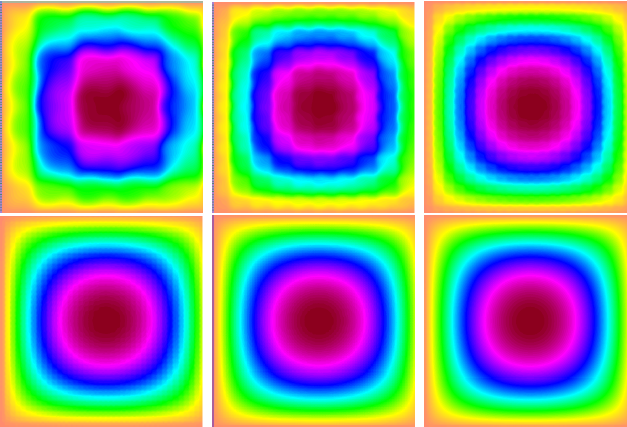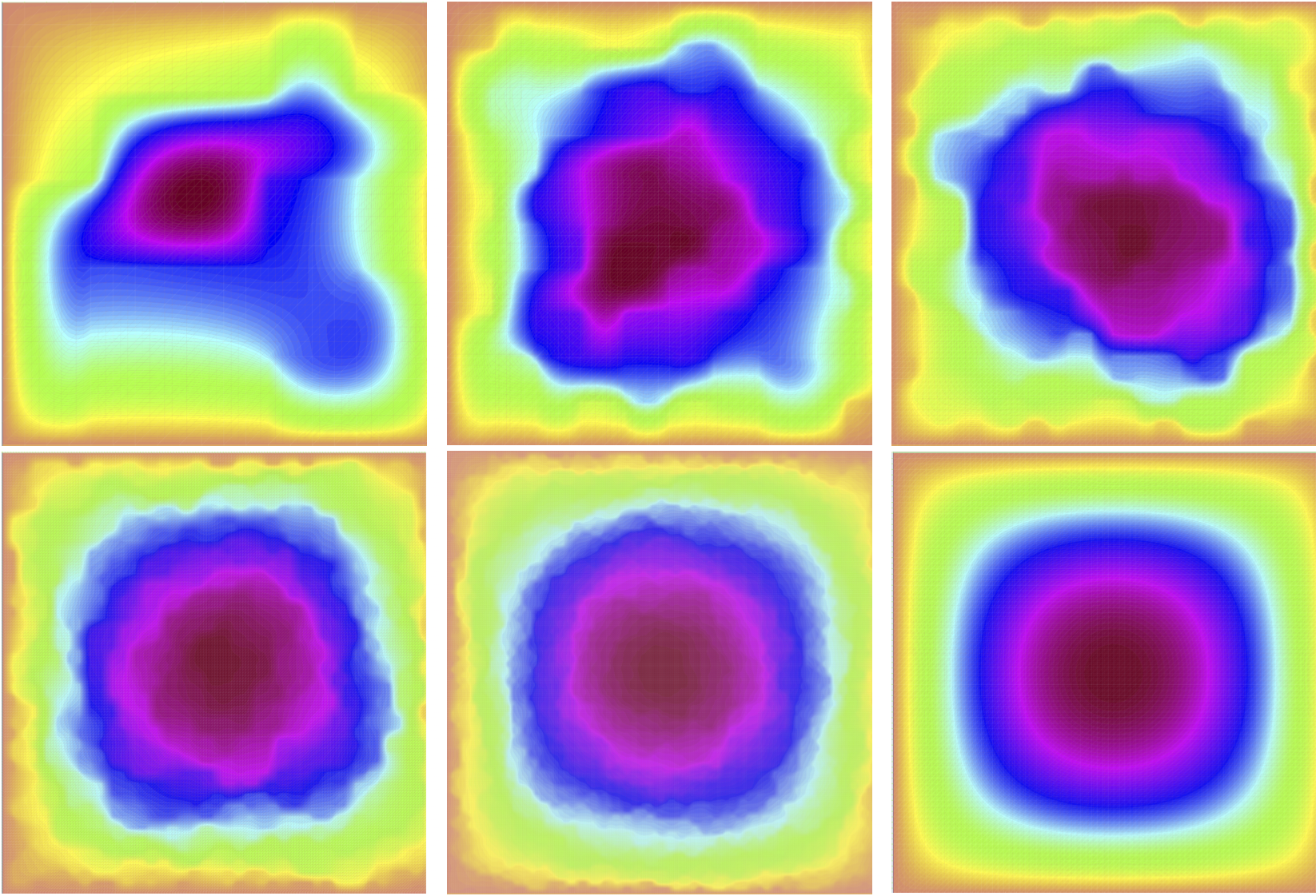Section: Overall Objectives
Scientific context
Whereas many models in physics involve randomness, they behave deterministically in suitable asymptotic regimes when stochastic effects average out. The qualitative and quantitative understanding of this deterministic behavior is the main challenge of this project.
From a mathematical point of view, our main fields of interest are stochastic homogenization of PDEs and random or deterministic one-dimensional nonlinear Schrödinger equations. These topics involve two challenges identified in the strategic plan of Inria “Objectif 2020": randomness and multiscale modeling.
From a physical point of view, the problems we shall consider find their origin in
Stochastic homogenization
Homogenization is a theory which deals with oscillations in PDEs. Let be a smooth bounded domain of . The starting point is the fact that for linear elliptic equations, the oscillations of the weak solution of
for some suitable r. h. s. are a (nonlinear) function of the oscillations of . In particular, if oscillates at scale , one expects to display oscillations at scale , and to be close to some function which does not oscillate if in addition . This is the case when is the -rescaled version of a periodic function . Then is -periodic, and there exists some fixed matrix depending only on (and not on ), such that behaves as , the weak solution of
The homogenized coefficients are characterized by the so-called correctors in direction , distributional solutions in of
In the periodic case, these correctors are well-behaved by standard PDE theory. The convergence of to is illustrated on Figure 1 (periodic checkerboard on the left, random checkerboard on the right), where the isolines of the solutions to (1) and (2) (with on the unit square) are plotted for several values of — the convergence of to is weak in . Yet, naturally-occuring structures are rarely periodic. If instead of considering some periodic , we consider some random , the story is different, cf. Figure 1 for results on the random checkerboard. In the early period of stochastic homogenization, in the seventies, it was not clear if just the ergodicity and stationarity of the coefficients and ellipticity were enough to prove convergence of almost surely and identify the limit . The meaning to give to (3) was indeed quite unclear (the equation is posed on the whole space). It was a surprise, therefore, that this was possible with random coefficients, and that stochastic homogenization was indeed a new type of qualitative ergodic theory ( [50], [47]). The following natural question, asked more than thirty years ago, is whether one can develop an associated quantitative ergodic theory.
One of our initial motivations to develop a quantitative stochastic homogenization theory is the derivation of nonlinear elasticity from polymer physics, which is presented in the research program and application section. We plan to develop a complete quantitative theory of stochastic homogenization of elliptic equations. In particular we aim at quantifying how well approximates , and at identifying the asymptotic law of the solution in function of the law of .
Schrödinger equations
The linear Schrödinger equation, with an appropriate choice of geometry and boundary conditions, has been central to the description of all non-relativistic quantum mechanical systems for almost a century now. In addition, its nonlinear variant arises in the mean field description of Bose-Einstein condensates, where it is known as the Gross-Pitaevskii equation, but also in nonlinear classical optics, and in particular in fiber optics. The quantitative and qualitative description of its solutions (for both the evolution and the stationary equations), their time-asymptotic behavior, their stability or instability in terms of the parameters of the initial conditions and/or the potentials and boundary conditions continue to pose numerous physical and mathematical problems (see [53] and [33] for general references).
In view of our collaboration with the Lille laser physics laboratory PhLAM, we will focus more particularly on the one-dimensional nonlinear Schrödinger equation (NLS). Indeed, (NLS) drives the envelope of the propagation of a laser pulse in a Kerr medium, such as an optical fiber [53]. Many phenomena on (NLS) (and variants thereof, with higher order derivatives, various types of initial conditions, external fields, etc.) are put in evidence by physical experiments at PhLAM, are not fully understood, and raise exciting questions from the numerical and analytical perspectives.
The same type of equation also describes Bose-Einstein condensates, for which questions related to Anderson localization are also of interest theoretically and experimentally at PhLAM.



